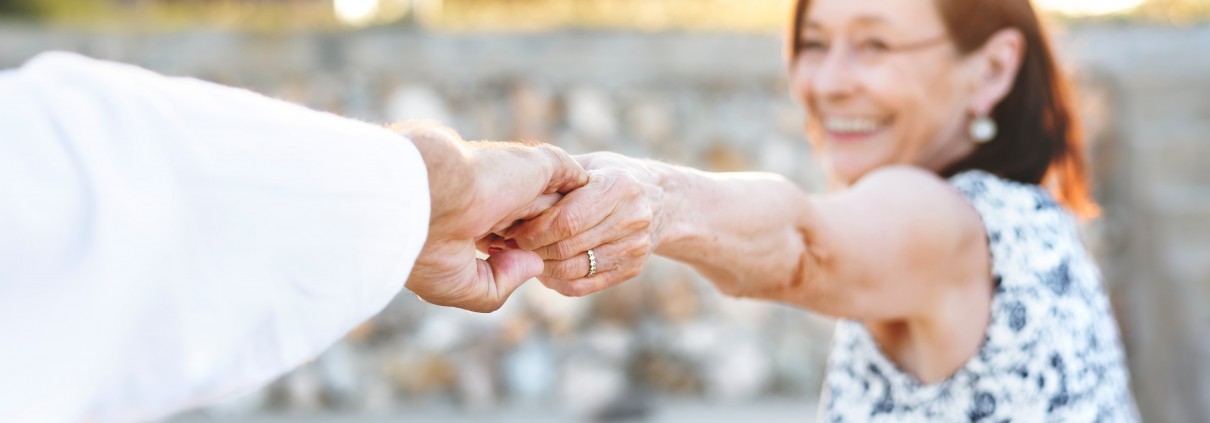Fall Prevention For Seniors
About 30% of people 65 years of age or older have a fall each year, increasing to 50% in people 80 years of age or older. Falls can cause distress, pain, injury, prolonged hospitalization, and death. Falls also result in loss of confidence and independence, particularly where family members, care partners and health professionals’ reactions are to be overly protective. In this article we’ll talk about some of the reasons why aging can lead to falling, and provide some fall prevention tips for seniors.
Why Do Seniors Fall?
In a study of 8.3 million people, falls are one of the main reasons why people are readmitted into the hospital:
- 16% readmission rate for people with cognitive impairment
- 13% readmission rate for people with a previous fall
- Falls were the second leading diagnosis at readmission for patients with cognitive impairment or whose initial hospitalization was fall related
8% of falls are unpreventable and they are due to and unknown or emergent medical condition such as:
- Seizure
- Heart attack
- Stroke
- Orthostasis
Risk Factors For Seniors Falling
The risk of falling is multicomponent and the more risks a person has, the greater their risk of falling. The strongest risk factors for a fall are age and a previous fall. Other examples of risk factors include:
- being male
- higher care needs
- incontinence
- medication use
- delirium
- cognitive impairment or dementia
- poor vision
- postural hypotension
- peripheral neuropathy
- muscle weakness
- postural instability
- mobility and/or balance problems
- vitamin D deficiency
- arthritis
Common Fall Risk Factors
While aging is one of the risk factors for falling, Orchard at Brookhaven is committed to using fall prevention protocol and fall prevention programs to help our residents age well.
Three of the most common modifiable intrinsic fall risk factors are muscle weakness, balance deficits and gait instabilities. These intrinsic risk factors may be modified by exercise referred to as structured, planned and repetitive physical activities in community-based organized exercise programs. Balance is important for maintaining postural equilibrium and thus for the avoidance of falls. Besides balance, muscle strength and power is required for the successful performance of activities of daily living.
Preventing Senior Falls At Home
Below are some tips to help prevent seniors from falling in their home:
- Remove Obstacles – Walk through your home and take note of anything that could be a hazard. Culprits include throw rugs, cords, baskets or plant stands. Eliminate these from walking paths. Assess your furniture pieces to make sure they are placed in ways that don’t obstruct walking paths.
- Turn on Lights – Keep lights on in dimly lit areas or use night lights with sensors. Place flashlights in convenient locations in the event of a power outage and make sure to keep a lamp on your nightstand. If you’re concerned about the expense of leaving lights on, consider investing in energy-efficient LED bulbs.
- Choose the Right Shoes – Your favorite slippers may be comfortable, but slip-on shoes are not recommended in most circumstances. Select shoes with non-skid soles that offer your foot support.
- Try in Home Balance Exercises – Keeping steady on your feet is an excellent way to stay in shape and is an integral part of fall prevention.
- Take a Walk – Staying physically active is a great approach to fall prevention. A daily walk around your block, neighborhood or local walking paths will strengthen your legs as well as increase your endurance. Consider walking around the mall during the winter months.
- Call Your Physician – If you take prescription medications, consult your physician about possible side effects that can cause loss of balance. If you’ve experienced changes in your physical abilities, inquire about therapy services that can address your mobility and balance.
Exercise is an accepted stand-alone fall prevention strategy, particularly if it is balance training or regular participation in Tai Chi. Dance shares the ‘holistic’ approach of practices such as Tai chi. It is a complex sensorimotor rhythmic activity integrating multiple physical, cognitive and social elements.
Senior Exercise Programs To Prevent Falling
Some exercise programs that have been studied to determine their success in reducing falls include:
- Tai Chi training appears to reduce balance impairments in patients with mild-to-moderate Parkinson’s disease, with additional benefits of improved functional capacity and reduced falls.
- Tai Chi, a balance-based exercise, has been shown to improve strength, balance, and physical function and to prevent falls in older adults.
- Yoga interventions resulted in small improvements in balance and medium improvements in physical mobility in people aged 60 years and
- Dance offers older people an opportunity for greater social engagement, thereby making a major contribution to healthy ageing.
Orchard at Brookhaven is a senior living community in Atlanta that’s committed to using fall prevention protocol and fall prevention programs for our residents. If you have any questions, or would like to schedule tour, please contact us.



